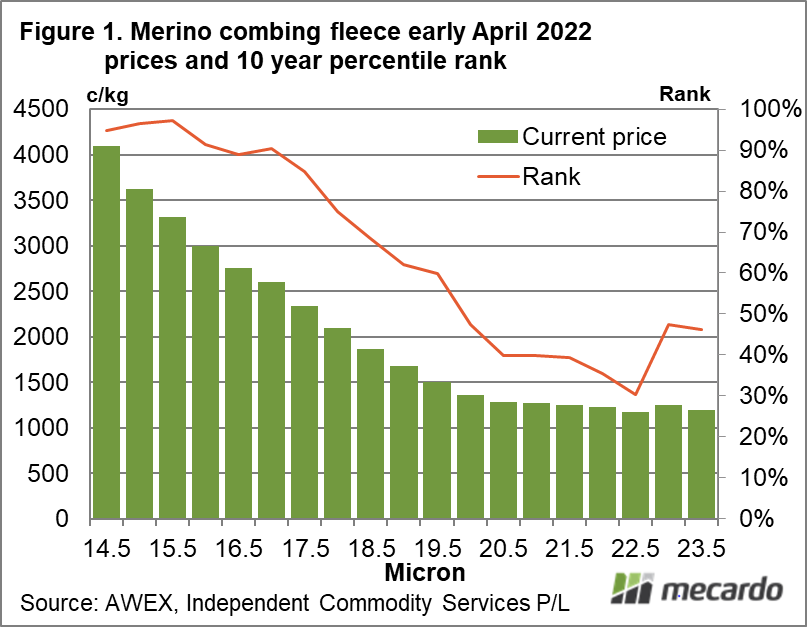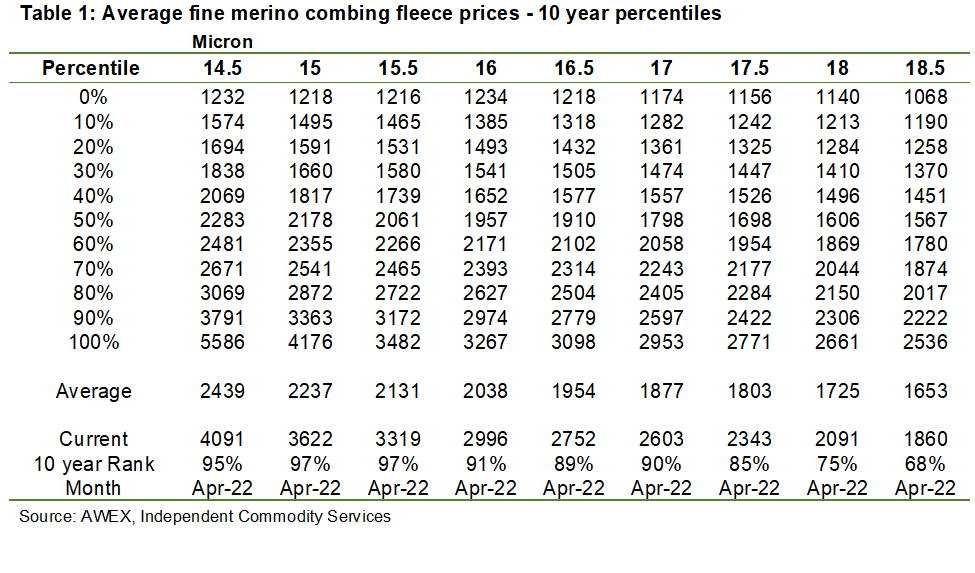While average merino prices have rebounded from the pandemic lows of 2020 (along with a lot of commodities) the range of rebound has been uneven. This article takes a look at merino fleece prices across the micron ranges.
AWEX Micron Price Guides (MPG) runs from 16.5 micron to 32 micron, reflecting prices for representative types of wool for each micron category. The link to the makeup of the AWEX MPGs is provided here. In this article Mecardo, without the constraints of being the official market reporter, takes a wider approach to developing prices for each half micron by simply averaging eastern sales centre combing length merino fleece (greater than 50 mm), with vegetable matter below 2%, no subjective faults, a staple strength 30 N/ktx and higher and no RWS lots.
Figure 1 shows the half micron prices for sales in the first week of April (bars) along with the 10 year percentile rank for each half micron category (line). The price is relatively flat between 20.5 and 23.5 micron, with the price ranks 30% and 47%, although prices for the very broad edge of the merino distribution can be erratic due to the low volumes sold. From 20 micron and finer the price climbs with a steep gradient. For anyone looking to split wool up for sale using point of micron fleece data the key inflection point in the micron price curve is in the 20-20.5 micron range.
The data behind Figure 1 for 14.5 to 18.5 micron is given in Table 1. The 10 year percentile rank (deciles) is given, with the average price for the period shown below that, then the current (early April) price and its 10 year rank. The percentile rank increases as the fibre diameter falls, showing the strength of the current market is certainly focused on the finer micron categories. The order of the price rank across micron categories is similar even when the lookback period is varied between 5 and 20 years. In other words prices are good for fine merinos.
Table 2 repeats the exercise for 19 through to 23 micron merino fleece, keeping in mind the 22.5-23 micron prices do jump around due to low volumes. The price rank for this group levels out around 20.5 micron in the 35-40% range.
What does it mean?
Fine merino prices are trading at high levels by varying historical standards. The general wool indicators (EMI and merino average) reflect the bulk of wool in Australia which is between 17 and 21 micron and in doing so they do not reflect the strength of the fine merino market.
Have any questions or comments?
Key Points
- Prices for broader merino 20-20.5 micron to 23 micron are relatively flat (similar).
- The merino fleece price curve turns upward between 20 and 20.5 micron and rises fairly consistently through to 14.5 micron.
- The 10 year price rank rises as the micron falls starting from 20 micron, rising to very high levels.
Click on figure to expand
Click on figure to expand
Click on figure to expand
Data sources: AWEX, ICS




